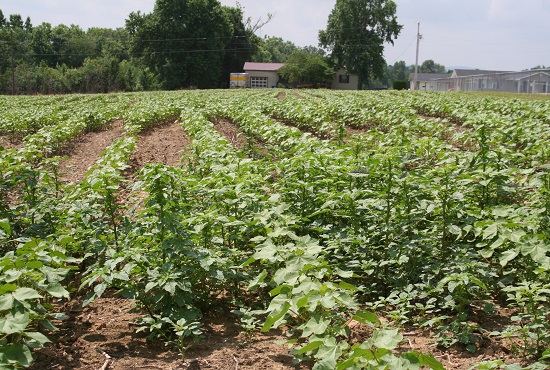Market Watches as Late Cotton Crop Progresses
December finally traded to 90 cents – well, 89.97 – settling the week near the highs at 89.93 cents. That was a life of contract high settlement.
The market push to the 90-cent level was based on the bullish tone of the July world supply demand report. Further, demand has remained exceptionally strong, and the crop size is now in Mother Nature’s hands.
Much of the U.S. crop remains some 2-3 weeks behind normal but appears to be catching up. Certainly, there is plenty of time to catch up, but the crop is very late, and more acreage has yet to bloom than has bloomed. Considerable acreage should enjoy its first blooms during the coming week.
Most crops did make excellent progress during the week, but the Mid-South crop, despite some timely rains, is facing abnormally dry conditions over much of the area. This problem is compounded as the crop is entering the critical time for the beginning of heavy fruit set – a time when moisture is badly needed. One Mid-South grower commented, “I am trying to keep this crop from burning up.”
Even at that, the crop has not faced the typical high temperatures and has not built up the typical degrees days associated with big crops – or even average crops. Yet, the seed companies have truly delivered several racehorse varieties that are very capable of coming on exceptionally strong and finishing very fast.
The market should continue its trek toward 93 cents but will encounter considerable resistance between 92.50 and 93 cents. Many are now convinced that 93 cents is a hill too high to climb, but I suggest prices will eventually scale that level. Possibly, I am bit too pessimistic about fall weather conditions – an absolute unknown at present. However, the entire cotton belt must have a late fall if the U.S. crop is to develop its full potential.
The resurgence of the coronavirus has not slowed cotton demand. In fact, the demand for cotton relative to man-made synthetic fibers has increased, a sign that bodes well for continued strength in the cotton market.
The USDA July world supply demand report provided the impetus for higher prices as USDA lowered its estimate of world ending stocks to 87.7 million bales – down 1.6 million bales from last month’s 89.3 million. USDA increased world consumption some 700,000 bales – up from 122.5 to 123.2 million bales. The increase in world consumption was attributed to an increase in India (500,000 bales) and Vietnam (100,000 bales).
Too, world production was increased 500,000 bales – up from 118.9 million in the June estimate to 119.4 million bales this month. The estimated increase in world production was more than accounted for by an 800,000-bale increase in estimated U.S. production – up from 17.0 to 17.8 million bales.
USDA’s estimate of U.S. production at 17.8 million bales was a surprise to the market. Yet, market prices have continued to increase despite the estimate. It is felt that USDA’s NASS unit greatly overestimated the estimate of planted acres in Texas and the subsequent harvested acreage in the state as well. Granted, the state finally received excellent moisture but far too much in some cases.
Additionally, due to the insurance price of approximately 83 cents, a higher percentage of brown bag cotton was planted as growers felt such acreage would be “zeroed out” due to the drought. Now it is evident that much of those brown bag plantings are on track to be harvested. Yield from those plantings should be well below par and cause production to fall well below the USDA estimate.
The current estimate is about 17.3 million bales. However, it will likely be September before USDA-NASS will conduct any survey of crop size. The coronavirus effectively has USDA-NASS shut down.
Likely the cotton market will be in a “teeth pulling mode” in the coming weeks as it eases higher. It will not be easy. New price highs are on the way.
Give a gift of cotton today.








